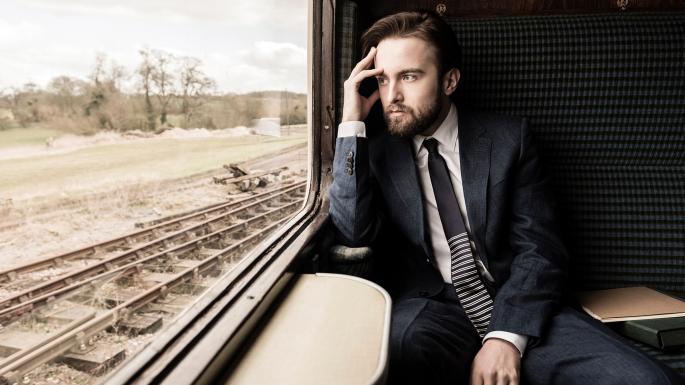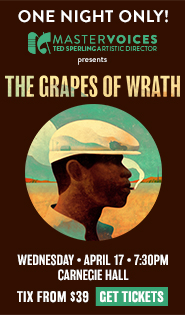Trifonov brings supreme artistry and insight to Carnegie Hall

Daniil Trifonov performed a recital Saturday night at Carnegie Hall.
Saturday night, pianist Daniil Trifonov once again graced the Carnegie Hall stage with an unforgettable musical experiences, the kind that only his combination of unsurpassed pianism and individual insight and interpretive conviction, can deliver.
With Trifonov, one has come to expect familiar repertoire heard in out-of-the-ordinary ways, played at a level one had not previously imagined. But even this remarkable artist can have his lapses, so let’s note those up front.
The sole instance of that was the shape of the program itself. Beethoven and Schumann were on the first half of the concert, which opened with the former’s “Andante favori” Andante in F Major, followed by the Piano Sonata No. 18, Op. 31, no. 3. The first half finished with Schumann’s Bunte Blätter and the Presto passionato, the posthumously published original final movement to his Piano Sonata No. 2.
The sole piece on the second half was Prokofiev’s Piano Sonata No. 8, the last of the three sonatas the composer wrote during WWII. There was nothing wrong with Trifonov’s playing, but the mood and style of this sonata was so vastly different than the first half’s romanticism that the two halves felt like two different concerts. In and of itself this was not an objective problem, but the disconnection meant no opportunity for an experience that reached the greatest heights and depths of thematic and esthetic consonance. Such is the elevated standard the pianist has set for himself.
In every other way, this was a powerful experience with typically marvelous phrasing. Whether gliding along the keyboard or raising himself off the piano bench to get that extra measure of forceful attack, every note fit into a longer view, its relationship logical to what came before and was to come after. Trifonov thinks in such a way as to uncover what he finds to be the maximum beauty in every musical moment.
That means a relatively sloppy “Andante favori,” with maybe a half-dozen clumped or mis-struck notes, was still gorgeous and absorbing. An artist’s mind can wander at any concert, with Trifonov that means trying to hold a bit longer onto the memory of what had just been heard—technical mistakes that in other instances would be jarring were inconsequential.
His technique is extraordinary, not for how fast or loud or clearly he can play but for how great he makes the music sound. (His legato across long passages, played at the extreme forward edge of tempos and with astonishing evenness, was as thrilling to witness as it was to hear.)
He played the Beethoven sonata faster than one had ever heard, except perhaps for Glenn Gould’s recording. But where Gould was mocking and dismissive, Trifonov turned the sunniness and jauntiness in the sonata up to eleven.
The Bunte Blätter is a somewhat haphazard collection of short, individual pieces that Schumann never intended to relate to each other, nor did he think of them as finished, polished pieces. The book was meant to capitalize on the success of earlier sets like the Kinderszenen. But Trifonov has shown a special affinity for Schumann, and his grace and energy made rote or secondary melodies and harmonizations (like the “Stücklein I” and “Albumblätter I”) into poignant miniatures. The turmoil of “Albumblätter II” was exciting, and in the end Trifonov made the uneven music sound first-rate.
Despite Clara Schumann’s feeling that the Presto passionato was too difficult to play and too hard on the audiences (Schumann wrote a new finale at her request), the music to modern sensibilities is strong and coherent. Trifonov’s fluid energy in the movement, like a sprinter maintaining that pace for several miles, was at first stunning—the combination of speed and force alone were flabbergasting—then rousing.
As a self-contained interpretation, Prokofiev’s sonata was at the same level of everything else Saturday night. The slow opening was a window into Trifonov’s poetic sensibility. While the music comes the period after the Soviets had turned back the German army, and the outcome of the war was inevitable, any triumph is tempered by a tremendous sense of loss. At this point in the concert, one found the pianist’s energy almost normal; what expanded the experience was the ghosts he brought out of the instrument, the feeling of dazed people emerging from their wrecked homes to wander through the rubble of their existence.
Trifonov played two encores, the first—movements II and III of Prokofiev’s Sarcasms—biting, ferocious, and in the end witty, while the second, Alfred Cortot’s transcription of the Largo from Chopin’s Cello Sonata, with the caress of a lullaby.
Yefim Bronfman plays Debussy, Schumann, and Schubert, 8 p.m., April 4 carnegiehall.org




Posted Feb 14, 2019 at 6:35 pm by Hillel Jaffe
Friedrich Gulda’s timing of the Op. 31/3 is an overall 20:11 (Decca); whereas Trifonov’s Carnegie performance was 22:17 (replay on Medic.tv). In some passages Trifonov does seem faster, but overall his is 2:06 minutes longer than Gulda’s. Gulda’s Presto is, in fact, 10 seconds shorter.